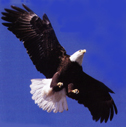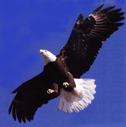|
The Soviet Franz Josef Land Overflight by Page 1 of 2 Pages |
||||||
 |
 |
|||||
|
Security considerations regarding the overflight project, were such that upon our arrival at Thule, and during the time that we were there, I did not believe that the Base Commander was in the “right-to-know loop,” as to our purpose and objective. Whether SAC HQ later informed him I do not know. However, in my discussions with the Base Commander and considering the excellent assistance given to us, I had no doubt that he had been appraised by SAC of the importance of our being at Thule and the security classification.
In the first weeks of September, 1952, a large contingent of reporters and journalists, representing national newspapers and magazines, were flown to the Thule Air Base by the Air Force for the purpose of presenting this once secret base to the public. Unfortunately, this occurred at the same time we were making preparations for, and the actual execution of, our top secret overflight of the denied Soviet Franz Josef Land Archipelago. As reflected in our narrative, I soon learned that the civilian reporters were on the base. There were many attempts on the part of the journalists to interrogate our support team and flight crew members. The fact that the reporters were fishing for information created a real concern for the overall security of our mission. The presence of our RB-50 aircraft in the hangar, undergoing maintenance and engine runup on the ramp, could not be concealed from the journalists. Unknown to us at the time, my research revealed that the reporters were dispatching articles to numerous stateside newspapers and publications highlighting the Thule Air Base. The various articles indicated that a press conference was held with the Base Officials answering questions where supposedly unclassified answers were given. In answer to a direct question from a journalist, “Was it possible that the Soviets could have a base similar to Thule in Franz Josef Land?” — the officials declined to answer other than to say that the terrain of some Islands was suitable for air base construction. Among the numerous published articles, repeated speculation and references were made relative to Franz Josef Land, as well as the perceived possibility of the Soviets having established an air base similar to Thule on the Island of Rudolf, located within the Archipelago. It seems that speculation of a Soviet Base in the Franz Josef Land Archipelago was the highlight of their conversation and their visit to Thule. Why they chose to speculate on this island, I do not know. Our reconnaissance mission revealed that Rudolf was an “Ice Dome” on which construction would not be feasible because of it's size and topography. During the debriefing of our crew by the intelligence officials, we were not informed of the published news articles citing Thule and Franz Joseph Land. (Only my research in the year 2000, 48 years later, revealed the September 1952 publications.) The many widespread news articles, no doubt, could have generated considerable concern on the part of SAC Intelligence Officials and the State Department, as to the possibility of the security of the project being compromised. A formal objection or questioning by the Soviets was highly probable, if our overflight became known. If the Soviets filed an objection, there would likely be additional questions posed by the Danish Government. The above concerns, perhaps, were enhanced by the fact that our overflight was a departure from the agreement between the Danish Government and the U.S., in that the Greenland bases would be utilized for defensive purposes. That was the criteria that was presented to the Danish public at the time of Denmark's ratification of the 1951 agreement between the U.S. and Danish Government for the use of the Thule Air Base. There were, at the time preceding ratification, some real concerns on the part of the Danish Government regarding the impression that the American use of Greenland bases would have on Danish relations with the Soviet Union. The title of the 1951 agreement, “The Defense of Greenland,” emphasized that the base would be employed for defensive purposes only, although this was only partially correct. Our armed reconnaissance aircraft, being considered potentially hostile in nature, could have been considered to be in violation of the defensive precepts of this agreement. The discovery of our overflight by the Soviets and the subsequent, usual, official request to the State Department for an explanation would, in addition, have been extremely embarrassing to the Danish Government, particularly in view of their proximity to Russia and their past close association with the Soviet Government. Following WW II the Soviets had troops stationed on the Danish Island of Bornholm, located in the Baltic, until 1946. One argument posed against granting the U.S. the right to permanent bases in Greenland was the fear that it might lead to the Russians returning to Bornholm. In addition to these factors was the question of Danish sovereignty over Greenland. Knowledge of our overflight by both the Soviets and the Danish Government could have become a very, “Dicey,” subject. During our time at Thule, I do not recall a Danish Liaison Officer being on the base. I have recently learned that in September 1953 (one year after our flight) an RB-50 reconnaissance aircraft from my Squadron, with a support team, was dispatched to the Thule base for the purpose of engaging in a reconnaissance mission, the objective of which is unknown. During preparation for the flight, a Danish Liaison Officer, assigned to Thule, observed work being done on the RB-50 aircraft weapons system and the loading of ammo belts. This official confronted the flight crew with words to this effect, “You will not be permitted to make an armed flight from my base and start a war.” (This confrontation was related by S/Msgt Paul D. Miller, Rtd., the aircraft photographer assigned to this crew.) What action took place after that exchange is not known, however the mission was not flown. The aircraft and support personnel returned to Forbes AFB. End Page 1 of 2 Pages of Chapter 7 — Go to Page 2 You may go to Cover Page — Editor's Introduction & Prologue — Table of Contents Chapters — 1 — 2 — 3 — 4 — 5 — 6 — 7 Or, you may Home - Contact Us - Cold War Hist. - 91st SRS Hist. - Stardust 40 Mission Story |
||||||